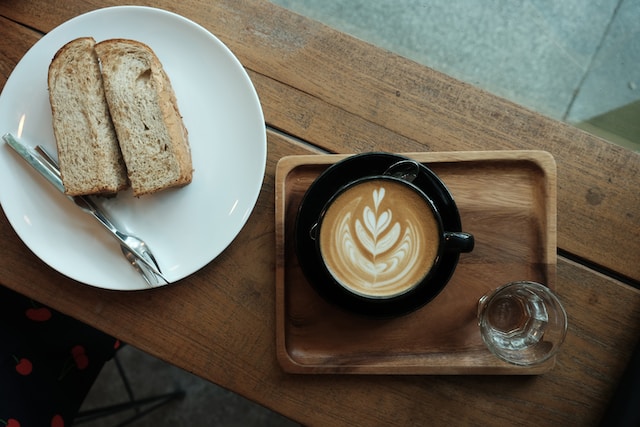Food photography has become an essential aspect of the culinary world, thanks to the rise of social media platforms such as Instagram. Mouth-watering, beautifully styled food photos have the power to attract customers and boost a restaurant’s reputation. In this article, we’ll discuss the art of food photography and provide valuable tips and tricks to help you capture Instagram-worthy restaurant shots.
Food photography is more than just snapping a picture of your meal. It’s about showcasing the beauty and artistry behind the culinary creations, evoking emotions, and enticing viewers to crave the dish. Great food photos can help establish a strong brand identity for restaurants, drive customer engagement, and create buzz on social media.
Getting Started with Food Photography
Choosing the Right Equipment
While professional photographers often use DSLRs or mirrorless cameras, you don’t need expensive gear to capture stunning food photos. A smartphone with a good camera, coupled with the right techniques, can produce impressive results. Invest in a tripod to avoid shaky shots and a clip-on lens to enhance your phone’s camera capabilities.
Setting up the Perfect Lighting
Natural light is your best friend in food photography. Place your dish near a window to take advantage of soft, diffused light, which brings out the textures and colors of the food. Avoid using flash, as it can create harsh shadows and unappealing reflections. If you’re shooting in low light, use a portable LED light to mimic natural light.
Considering the Background and Props
Choose a background that complements your dish without overpowering it. Simple, neutral backdrops like wood or marble surfaces work well. Props like cutlery, napkins, and glassware can add interest to your photo, but be mindful not to overcrowd the frame. Always keep the focus on the food.
Composing the Perfect Shot
Rule of Thirds
The rule of thirds is a fundamental principle in photography that involves dividing your frame into nine equal parts using two horizontal and two vertical lines. Placing the main subject at the intersections of these lines creates a balanced and visually appealing composition.
Different Angles
Experiment with different angles to find the most flattering perspective for your dish. Overhead shots work well for flat lays, while a 45-degree angle can showcase the layers and height of a dish. Don’t be afraid to get close and capture the details or step back to include the ambiance of the restaurant.
Layering and Depth
Create depth in your photos by layering elements like plates, utensils, and garnishes. Use foreground and background elements to guide the viewer’s eye toward the main subject. By incorporating depth, you can make your food photos more dynamic and interesting.
Styling Your Food for Instagram-worthy Photos
Choosing the Right Plate
The plate you choose can make or break your food photo. Opt for plates with simple designs and colors that complement the dish without distracting from it. White plates are a popular choice because they allow the food to stand out.
Adding Garnishes and Accessories
Garnishes and accessories can elevate your food photos by adding color, texture, and visual interest. Use fresh herbs, edible flowers, or a sprinkle of spices to enhance the dish’s appearance. Accessories like cloth napkins, cutting boards, and rustic utensils can help tell a story and create a cohesive theme.
Creating Contrast and Balance
To create visually appealing food photos, pay attention to the balance and contrast between different elements. Use contrasting colors, textures, and shapes to create interest and harmony in your composition. For example, pair a smooth, creamy soup with a crusty piece of bread or surround a colorful salad with neutral-toned props.
Editing Your Food Photos
Basic Adjustments
Editing your food photos can make a world of difference in their final appearance. Use photo editing apps like Lightroom or VSCO to make basic adjustments like brightness, contrast, saturation, and sharpness. Remember, the goal is to enhance the image, not to make it look unnatural.
Cropping and Straightening
Cropping and straightening your photos can help improve their overall composition. Remove any unnecessary distractions from the frame and ensure your main subject is well-positioned according to the rule of thirds. Straightening the photo can also create a more polished and professional look.
Filters and Presets
While filters can add a unique touch to your food photos, be cautious not to overdo it. Instead, use presets or custom settings to create a consistent look across your Instagram feed. This will help establish your personal style and make your photos instantly recognizable.
Building Your Instagram Presence
Consistency in Style and Theme
Developing a consistent style and theme for your food photography will help you stand out on Instagram. Choose a color palette, editing style, and overall aesthetic that reflects your personality and brand. Be consistent in your posting frequency to keep your audience engaged.
Interact with your followers by responding to comments and messages, asking questions, and encouraging them to share their own food photos. Building a genuine connection with your audience can lead to increased engagement, loyalty, and growth.
Collaborating with Other Foodies
Partner with other food photographers, bloggers, and influencers to expand your network and reach new audiences. Share each other’s content, participate in collaborations, and support each other’s growth.
Conclusion
The art of food photography requires patience, practice, and creativity. By following these tips and tricks, you can capture stunning, Instagram-worthy restaurant shots that showcase the beauty of culinary creations and attract a loyal following. So, grab your camera (or smartphone) and start snapping!
